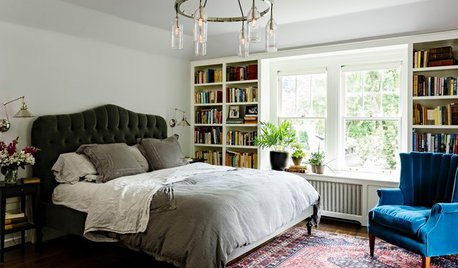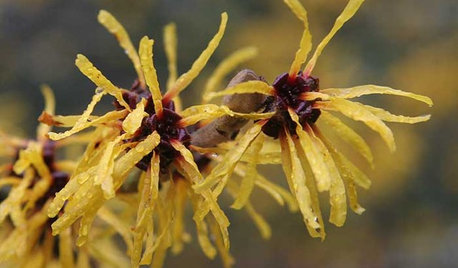As a home gardener who keeps mason bees for a hobby, I am always trying different types of houses/condos and systems every year, to see what kind of success I have and how the bees use the available housing.
This year I tried four types of houses and I wanted to share my harvest report and feedback about different designs. I'm curious what you've observed as well and would welcome comparisons and new ideas for next spring.
CONDITIONS
2010 was a very bad year for mason bees in the western US and Canada - record-breaking cold very late into the season. In Seattle, where I live, the weather was cold and stormy, and the bees didn't emerge until after most of the fruit trees were finished flowering. Still, my population increased.
SITE
House in the City of Seattle, in the pacific northwestern USA. The climate here is cool and maritime, the local landscape for the bees is small city yards and street trees.
PLACEMENT
All of these houses are mounted on the south side of the house, the sunniest location I have. They got sun from about 10am to 4pm, but on the south side, they were exposed to more wind and rain as well.
EMERGENCE
I started with cleaned loose cocoons - roughly 150 females and 200 males. The loose cocoons were placed in emergence drawers/trays/boxes. I released them in several "waves," but regardless most of them emerged in the same one-week period in April, after three straight days of temperatures above 70 degrees. Nest systems that had emergence boxes were immediately occupied. The one house I had that didn't have space for emergence was occupied last and only at the end of the season.
NEST SYSTEMS
#1 - Commercial system - BeeDiverse
Wood shelter with interlocking plastic trays. Bare plastic only, no liners.
#2 - Commercial system - Pollinator Paradise
Metal shelter with interlocking wood trays secured by bolts. Half lined with white pre-slit straws; half left bare.
#3 - Individual manufacturer - Pasquale G
Wood shelter, loose solid wood trays with drilled round holes. Holes lined with rolled brown paper + rubber stopper at back.
#4 - Individual manufacturer - Hutchings Bee Service
Wood shelter, individual solid wood trays with square channels OR open tray space. Each tray covered by clear plastic for viewing; very deep 12" tubes.
DATA
#1 BeeDiverse
Harvest
Filled tubes: 29 out of 30
Females:46
Males: 60
Mortality
Pollen mites: 12
Mold or chalkbrood: 4
Misc predators: 13
Total mortaility: 27.4%
#2 Pollinator Paradise
Harvest
Filled tubes: 64 out of 98
Females: 191
Males: 241
Mortality
Pollen mites: 50
Mold or chalkbrood: 0
Misc predators: 29
Total mortaility: 18.3%
#3 Pasquale G
Harvest
Filled tubes: 35 of 35
Females: 90
Males: 124
Mortality
Pollen mites: 15
Mold or chalkbrood: 0
Misc predators: 8
Total mortaility: 10.7%
#4 Hutchings Bee Service
Harvest
Filled tubes: 1 only
Females: 7
Males: 4
Mortality
Pollen mites: 5
Mold or chalkbrood: 0
Misc predators: 8
Total mortaility: 45.5%
DISPERSAL
I started with about 150 females, but only 50 stayed to next - a dispersal rate of 67%.
OVERALL REPRODUCTION
(after end-of-season cleaning)
On average, each nesting female filled 2.5 tubes and produced 15 cocoons. I started with 350 cocoons and ended up with 763 cocoons.
SYSTEM FEEDBACK
#1 BeeDiverse
This system is readily adopted by the bees and easy to clean and manage. It also consistently has the highest mortaility rates, year over year, and is the only system I ever see mold in. Its peaked roof allows for a variety of emergence containers - very handy.
#2 - Pollinator Paradise
I used a 50/50 mix of slit paper straws and bare wood tubes. The bees preferred the bare wood by almost 50% more. This system produced a high number of cocoons per tube. Mites were able to migrate between tubes due to the "interlocking tray" design, but I don't think it significantly impacted mortality. It is a pain in the neck to clean because all of the trays are adhered to a single backing. The slit paper straws were easy to open, and if all of the cocoons looked healthy I simply left the tube intact.
#3 - Pasquale G
The bees favorite design -- immediately occupied and actively used - several design features seemed to appeal more to the bees here than in other houses - slighly wider tubes, a perch for landing/sunning, and the tube liners that stuck out a bit from the wood trays--these appeared to be easier to seal with mud, and these had more solid, smooth mud caps than the other houses. Brown paper was more popular than white. Lowest mortaility of all systems. Easy to clean and good solid wood protection.
#4 - Hutchings Bee Service
HBS systems have a very unique design - individual loose trays are covered by thin plastic sheets, which allows you to gently pull out the trays and observe nesting progress - lots of fun for a hobby. I question if the plastic promoted higher humidity (and more pollen mites) but the weather made it difficult to judge. The 12" deep tubes produced a high number of females per tube. The condo was not immediately used by the bees - perhaps because it was the only system that didn't allow space for an emergence box. Next year I will "seed" it with some filled tubes and see if it is adopted sooner.
That's it. All followup reports, feedback, comments and suggestions welcome.
















beermaninpa
tcstoehr
Related Professionals
Arnold Landscape Architects & Landscape Designers · Cary Landscape Architects & Landscape Designers · Forest Acres Landscape Architects & Landscape Designers · Lakewood Landscape Architects & Landscape Designers · Owings Mills Landscape Architects & Landscape Designers · Piqua Landscape Architects & Landscape Designers · Edmond Landscape Contractors · Bergenfield Landscape Contractors · Burien Landscape Contractors · Hollywood Landscape Contractors · La Verne Landscape Contractors · Lexington Landscape Contractors · Milton Landscape Contractors · Northbridge Landscape Contractors · Northlake Landscape Contractorsgyozu
crownbee_dave
ilovebee
echoes_or
magalaOriginal Author